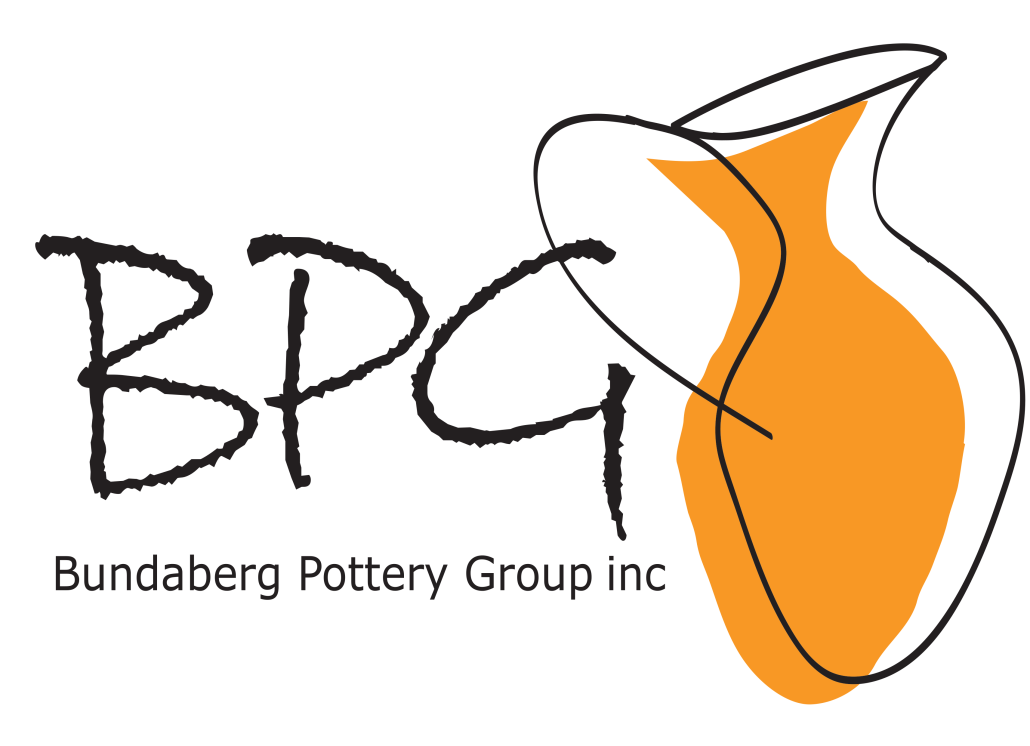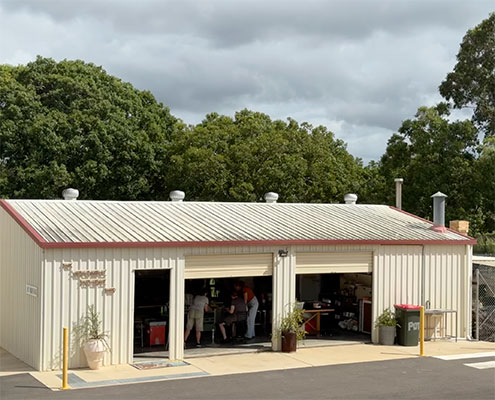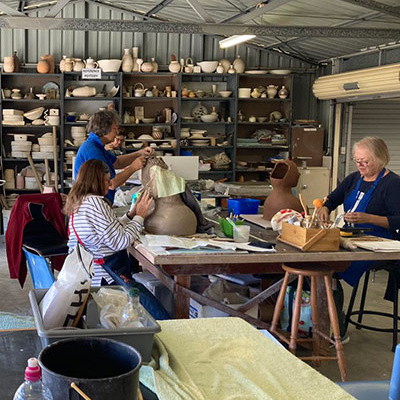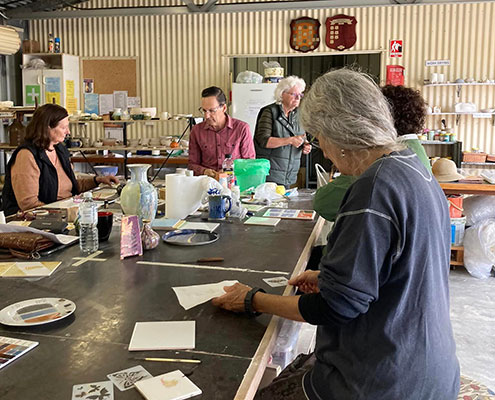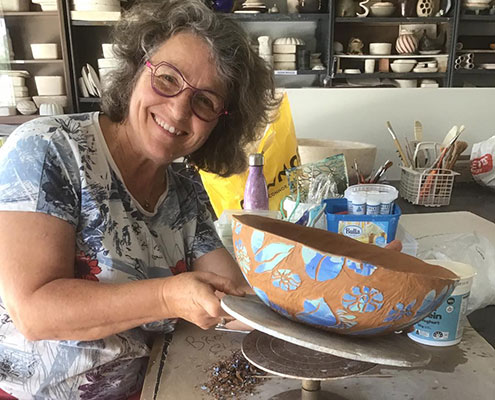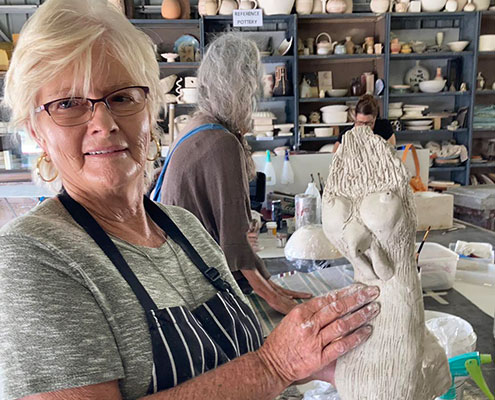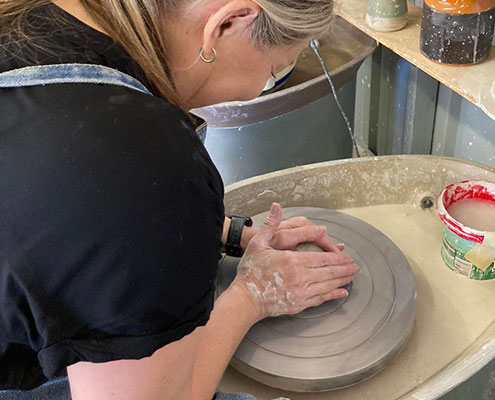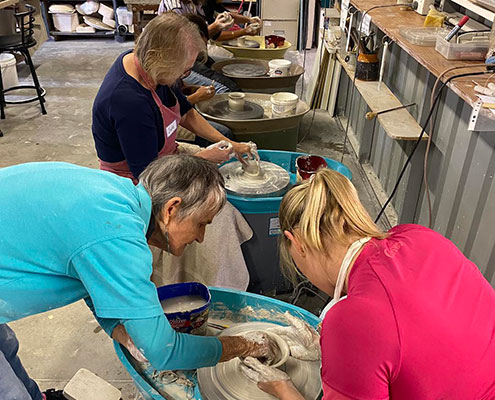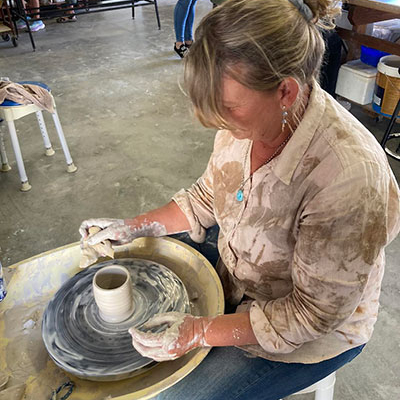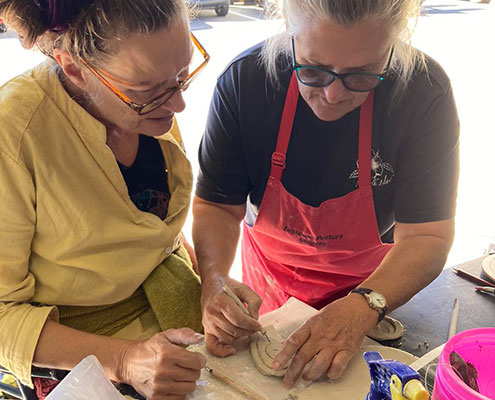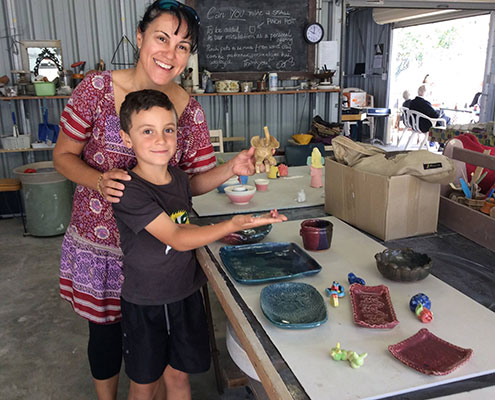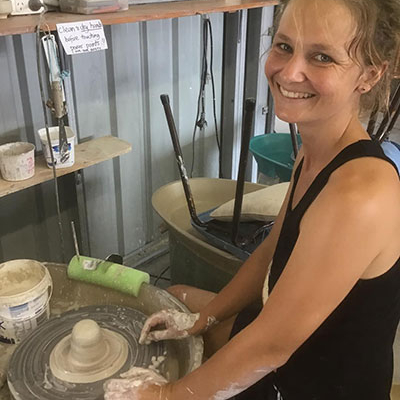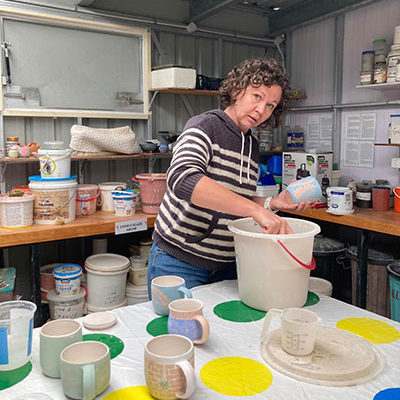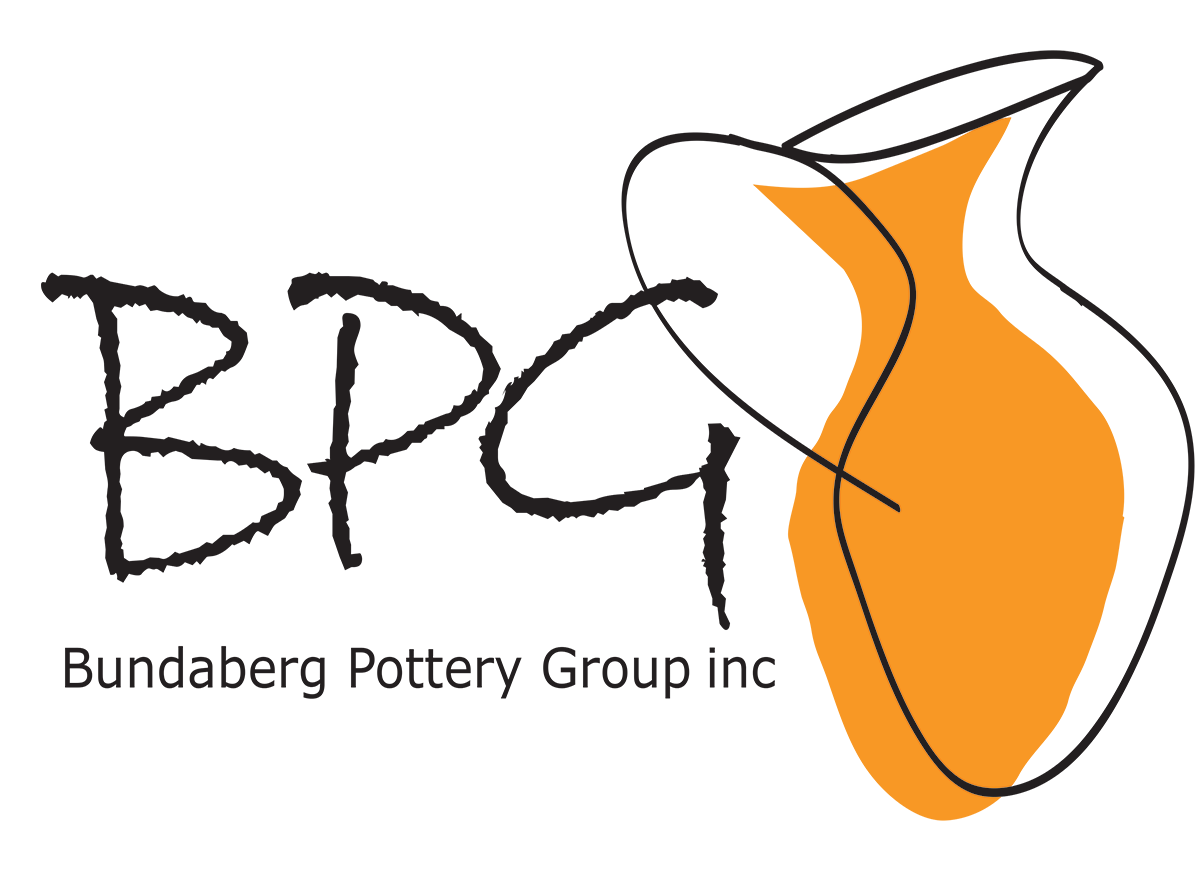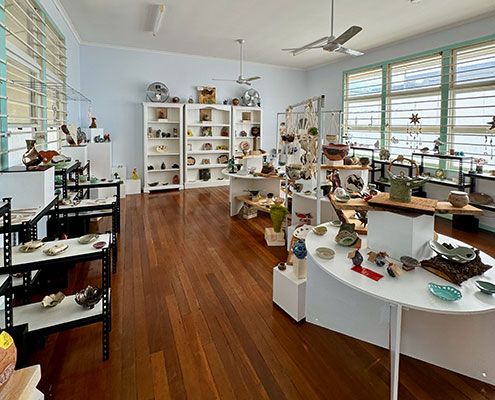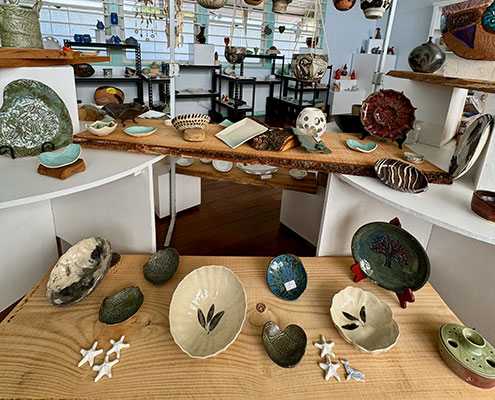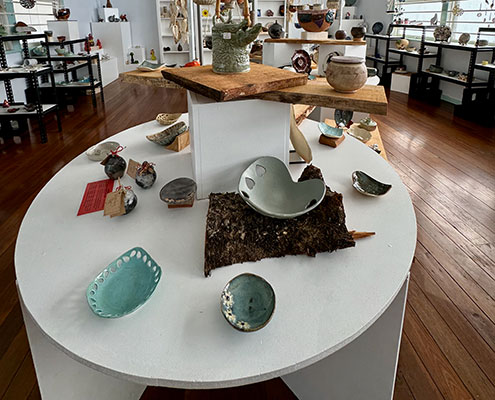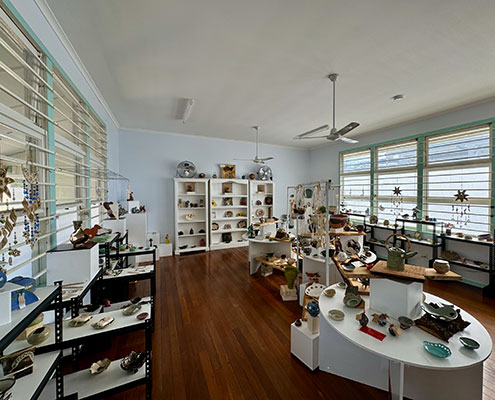Bundaberg Pottery Group Inc.
Welcome to our club and gallery
This is our 55th year running as a group, and we’re excited to share that we now have over 130 members!
The Bundaberg Pottery group welcomes individuals of all skill levels interested in working with clay.
The group has a wealth of knowledge, combining formal qualifications with extensive practical expertise. This experience is shared within the community through organized classes and workshops.
Our group strongly focuses on recreation and social activities. We provide a friendly and creative environment for potters to work together, exchange ideas, experiment with techniques, and challenge and support each other to expand their creativity. Our members regularly participate in various exhibitions and art activities in the area and often win prizes at these events.
We offer a clubhouse for creating items, a gallery shop for selling pieces, and lessons to connect with others. It is a place for those eager to learn about the craft and for individuals interested in expressing themselves artistically through hands-on activities.
What’s the history of the Bundaberg Pottery Group?
The Bundaberg Pottery Group was founded in 1969 with Mr. W. Baxter serving as its first president. Initially, the group operated from an old butter factory before moving to Burrum Street in 1970, located on the perimeter of the former Bundaberg Show Grounds.
The Flying Arts School was instrumental in the group’s establishment. They conducted workshops in different regional areas, including Bundaberg. The founding members later participated in a thorough TAFE course, providing extensive pottery-making knowledge. This included working with clay, firing techniques, and understanding glazes.
Membership was generated from pottery classes held at TAFE, and a number of these early members continue to be actively involved in club operations.
The club worked from behind the distinctively illustrated doors in Burrum Street until white ants dictated the need for new premises. The Bundaberg Regional Council gave the club land at Walker Street, and after eighteen months of hard work, fundraising, submission writing, and lobbying the State Minister for Arts, Mat Foley, sufficient money was raised to complete the current premises at 95c Walker Street.
The club room now has ample working space, five pottery wheels, a kiln room, a glazing room, and an outside area for raku, saggar, obvara, and wood firing. The council also made available to the group a gallery space which is well established.
Why is the group important to the Bundaberg Region?
Many of us value the social aspect. We have all made friends here and interact with a wide variety of people. The lessons are a great way to get to know people better. It is also an educational space for those who want to learn about the craft and for those who want to use their hands artistically.
How can the community be involved?
We offer classes for beginners, and we always have members who are willing to help both new and experienced participants. We frequently have carers bring their clients, and we teach the carers so they can support the clients during the sessions.
